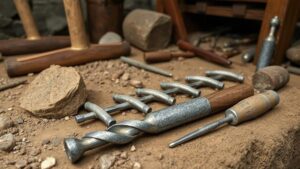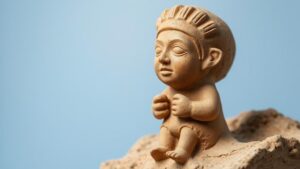How to Identify Landmarks Used to Mark Buried Loot by Early Settlers
Identifying Landmarks Used to Mark Buried Loot by Early Settlers
The exploration of how early settlers marked locations for burying valuables is both a captivating and intricate aspect of historical study. Utilizing natural and artificial landmarks, these settlers often relied on their environment to create mental maps, preserving knowledge passed down through generations. This article discusses methods to identify such landmarks, the significance of these markers, and real-world applications of archaeological practices.
The Importance of Landmarks in Early Settler Contexts
Landmarks served as vital references in the landscapes inhabited by early settlers, particularly in vast, unmarked wilderness areas. Unlike modern GPS systems, these individuals had to rely on recognizable features for navigation and the retrieval of buried items. As a result, understanding how to identify these landmarks can provide insights into settlement patterns and survival strategies.
Types of Landmarks Used by Early Settlers
Landmarks used by early settlers can be classified into two main categories: natural and human-made. Each type served a specific purpose and was often combined for greater efficiency.
- Natural Landmarks: Features such as distinctive trees, rock formations, hills, and bodies of water were commonly used as reference points.
- Human-Made Structures: Settlers often utilized remnants of buildings, fields, or fences as markers, particularly in areas of later settlement.
Identifying Natural Landmarks
To locate natural landmarks effectively, one should pay close attention to the following features:
- Unique Flora: Certain species of trees, such as the ancient and massive oak, were often noted for their distinct shapes and sizes.
- Geological Features: Hills or rocky outcrops that differ from the surrounding terrain often served as indicators of burial sites.
- Water Bodies: Streams, rivers, and lakes not only provided resources but were also used as reference points when burying loot.
For example, during the early 19th century in the Midwestern United States, settlers frequently referenced the Mississippi River as a key landmark for navigation and marking buried items. Also, certain unique rock formations in the Appalachian Mountains served similar purposes, providing a centralized mental map for settlers.
Recognizing Human-Made Landmarks
Human-made markers present another layer of complexity in identifying burial sites. These can include:
- Foundations of Abandoned Structures: Settlers might have buried items near old homesteads or outbuildings.
- Old Farm Equipment or Tools: Remnants of old agricultural practices were often indicators of nearby treasure locations.
A case study from the ghost town of Bodie, California, illustrates this well. Archaeologists have found that many treasures were buried near the remains of structures, allowing modern-day treasure hunters to successfully uncover hidden artifacts.
Mapping Historical Settlements
Utilizing historic land surveys, maps, and local folklore can be instrumental in piecing together potential burial sites. Sources such as:
- Land Grant Records: These documents often highlight the natural features of the land.
- Old Maps and Journals: Written accounts from settlers can provide first-hand references to important landmarks.
By analyzing these resources, researchers can develop hypotheses regarding burial locations. For example, in 18th-century New England, local maps provided insights into the curves of rivers and other features that settlers noted for navigation and treasure-keeping purposes.
Challenges in Identification
Identifying landmarks used by early settlers comes with its own set of challenges, including:
- Environmental Changes: Natural erosion or human development can alter the appearance of once recognizable landmarks.
- Lack of Documentation: Many early landmarks were not recorded, making identification difficult.
For example, settlers in the California Gold Rush era often buried loot near their campsites. But, with time, many of these sites have changed dramatically due to mining operations and urban development, which obscures the original markers.
Real-World Applications
Understanding and identifying these landmarks is not merely an academic exercise but has real-world implications. Treasure hunting and archeological preservation efforts can benefit from this knowledge, leading to:
- Increased Treasure Recovery: Knowledge of landmarks may enhance the success rate of treasure hunters.
- Historical Preservation: Identifying and preserving significant locations leads to a better understanding of early settlement patterns.
To wrap up, identifying landmarks used by early settlers to mark buried loot involves a multifaceted approach that combines environmental observation, historical documentation, and archaeological investigation. By carefully analyzing both natural and human-made features, modern researchers can uncover the rich stories of past societies and their ways of life. Armed with this knowledge, anyone interested in treasure hunting or historical study can enhance their skills and discover hidden aspects of our shared history.


